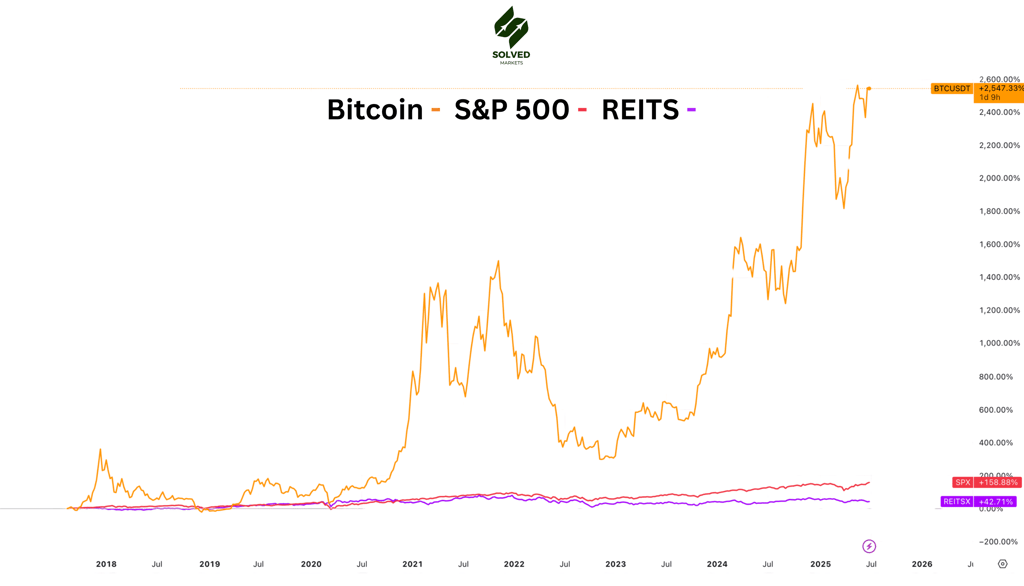How $5,000 Grows Over 20 Years: Stocks, Real Estate, or Crypto?


INTRODUCTION
Have you ever wondered how far a $5,000 investment can take you over two decades? With the rise of various asset classes, from traditional stocks to real estate and cryptocurrencies, let’s break down how that initial amount could have grown if invested in each category.
1. $5,000 in the Stock Market (S&P 500)
The S&P 500 has averaged roughly 8-10% annual returns over the past 20 years.
Estimated Growth:
At an average return of 9% compounded annually, $5,000 would grow to approximately $28,000 after 20 years.
Pros:
Consistent long-term growth
Dividends add to returns
Broad market exposure
2. $5,000 in Real Estate
Real estate tends to appreciate at around 3-5% annually, excluding rental income. However, with rental income and leveraged property purchases, returns can be higher.
Estimated Growth:
Assuming 5% annual appreciation, $5,000 invested in real estate (through REITs or direct ownership) could grow to around $13,000 over 20 years, not accounting for rental income or leverage.
Pros:
Tangible asset with potential for rental income
Hedge against inflation
Tax advantages
3. $5,000 in Bitcoin
Bitcoin’s historical returns have been nothing short of explosive. Despite its volatility, long-term holders have seen tremendous gains.
Estimated Growth:
If you had invested $5,000 in Bitcoin in 2013, when Bitcoin was roughly $100, your investment could be worth over $1 million today. However, future returns are highly unpredictable.
Pros:
High upside potential
Hedge against fiat currency devaluation
Growing institutional interest
Conclusion
Different assets offer varying levels of risk and return. Historically, stocks offer steady growth, real estate provides stability and income, while crypto presents the possibility of outsized returns — but with significant risk. The best approach often combines these assets, aligning your portfolio with your risk tolerance and long-term goals.


